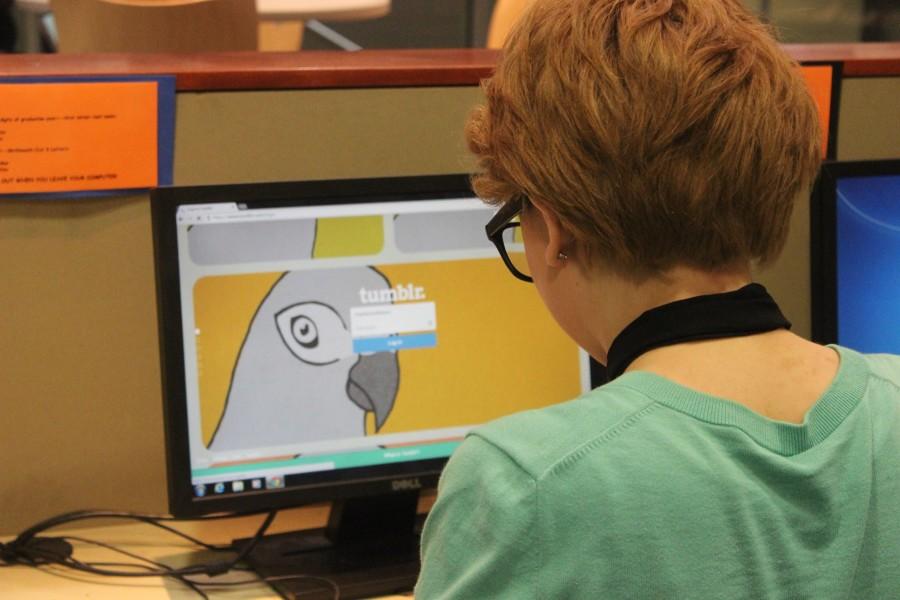How to Write a Story that Grabs Readers
Writing a good story is never easy, but with a few key tips, you’ll find it much easier to not only get started, but also write something that will grab your reader and not let go. Using selections from my own writing as examples, this guide will give you concrete advice for how writing a story readers won’t want to put down. When you’re done, click on the link at the bottom to read my full story, High School Lockdown.
Grab the reader
“Crack!
“He jumped in his seat, his head spinning.”
This is your first tip on how to write a great story. You must have a good lead to hook your readers and keep them reading. Unlike with movies, stories can’t afford to start slow, or readers won’t be interested. Because of this, authors have to capture a reader’s attention with the first sentence. The example above began with action, which is a good way to pull a reader into your story. I also began my story in a way that leaves the reader with questions, so that they will keep reading to find the answers. But you have to make sure that you actually give your readers answers, or they will become frustrated. For example, a puzzle can be a fun challenge, but only if you can solve it.
Develop your characters
One of the most important parts of your story are the characters. These are the people who live what you write, so they have to feel real to the reader. To do this, consider what your characters’ personalities are, and develop them by allowing your characters to interact.
“’Why are you freaking out so much?’ said Ryan. He leaned back in his chair with a grin. ‘It’s gotta be a joke . . .’
“’Not everything’s a joke,’ Jacob said solemnly, cutting off Isabel’s sharp retort.”
Communications between characters such as these help to show readers different aspects of their personalities by allowing them to see how your characters react in various situations.
Conflict is key
Next, stories need a structure. An important part of that structure is the inciting incident. After the exposition, where the characters and the setting are introduced, this is the point at which your character(s) experience an event that causes conflict. This conflict can be as dramatic as the world ending, or as apparently inconsequential as a shouting match between two friends. There’s an example:
“’Greetings, students. I am calling to inform you that the entire school is now in lockdown.’”
As the story continues, the initial conflict may not be as important as other conflicts appear or, you may introduce secondary conflicts, like this:
“Jacob leaped up and grabbed Isabel’s arm. She struggled; kicking, punching . . .”
This is an example of direct character versus character conflict. A list of other types of conflicts can be found with this link www.dailywritingtips.com/7-types-of-narrative-conflict/.
Grab them with dialogue
The next part of a story’s structure is the plot. After the lead and the initial conflict, you have to keep the story going. To do this, you have to make the reader feel connected to your story. A good way to make readers feel as if they’re watching events play out is by using character dialogue.
“’Who woke me up?’ he said with a yawn.
“’Who do you think?’”
Use descriptive language – but don’t over-explain
Another way to keep readers interested is to use descriptive language such as similes, metaphors, and adjectives.
“The grim fog that had descended over the students darkened as they began muttering to each other, questioning if what they’d just heard could actually be true.”
But before you start piling figurative language into your writing, remember that writing too much can be just as devastating to an otherwise good story as writing too little. Instead of covering every single detail, from the color of the door to the types of shoes your characters are wearing, let your readers fill in some of those gaps. The following is an example of this.
“’What is it? Is class over?’ he asked.
This allows readers to make the assumption that the character is a student in a classroom. Unless certain details are necessary to move the plot forward, don’t add them. Giving your readers loads of unnecessary information will confuse them as to what is important to the actual storyline.
On the other hand, not giving your readers enough information is also detrimental. Always look back and make sure that your story makes sense. A good practice is to let someone else read your writing after you’ve gone through and edited it yourself. Oftentimes, having a fresh pair of eyes will give you insight into what you might need to improve, such as making certain scenes clearer or changing sentences that are too long or short.
Another important point is to show, not tell. Readers won’t feel as if your story is real if you use unnecessary words that only create confusion and don’t add to your story. Telling readers that it is cold outside is much less interesting than you describing the chill in the air and the flakes of powdery snow that fall from the sky. You can use this link to find more examples of what not to include in your writing: http://litreactor.com/8-words-to-seek-and-destroy-in-your-writing.
End well
The final part of your story is the resolution. This is when the initial conflict is resolved and the story ends. As a writer, you have an unlimited number of opportunities as to what you want your story to be, and how it will end. You may choose to write a series of stories, in which case the conflict that your character(s) face(s) may not be completely resolved, or you could choose to end your story in a different way.
For example, a story that ends abruptly and leaves the reader in suspense is called a cliffhanger. This type of ending is intended to leave the reader in anticipation, and it is used to make your readers want to keep reading. But while this is a good way to add suspense to your story, you also have to make sure that you use it correctly.
Even though a cliffhanger isn’t supposed to give readers a definite resolution, it shouldn’t feel like the writer simply didn’t want to keep writing and decided to end it. Cliffhangers are meant to add to your story, so think carefully before you decide what to do.
Writing is Rewriting
The next point has less to do with content and more to do with grammar and punctuation. While checking for mistakes in your writing can be frustrating, it is important to make sure that you do it correctly. Being able to correctly use commas, quotation marks, and other forms of punctuation will make it easier for readers to understand your story.
Always remember that the story is yours, and that you should be pleased with the outcome. If you’re not happy with it, you can always rewrite it, and don’t be discouraged if you get stuck. Writer’s block is a problem that every writer faces, and the best way to deal with it is to keep on writing. You may not feel like you’re improving, but continuing to write is the only way that you’ll become a better writer.
To read my short story, High School Lockdown, click on the link below.





